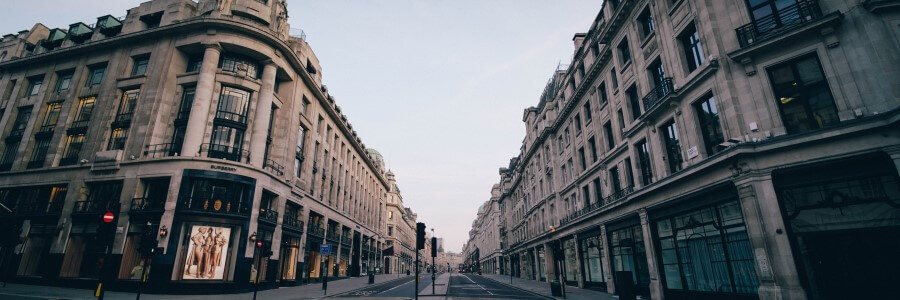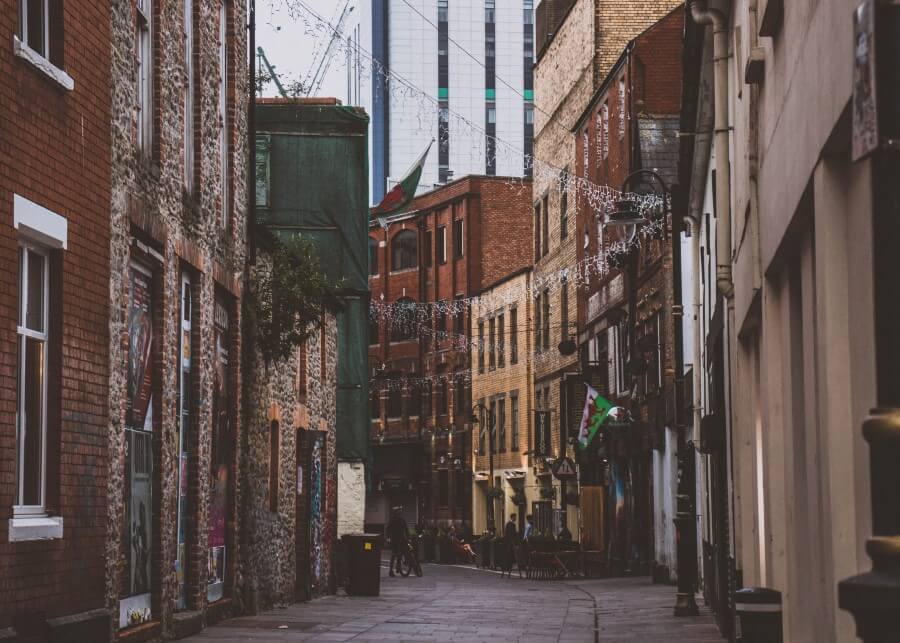
In this blog, Dr Laura Reynolds focuses on the potential implications of Covid-19 for how we prioritise and brand our cities, looking first at the potential impact on local collaboration, and second, on a potential reinvigoration of environmental and social resilience.
What implications might the Covid-19 pandemic have for the development of more inclusive and sustainable city brands?
Cities by their very nature are hotspots for social, economic and cultural activity, attracting residents, workers, businesses, investors, students and tourists to their traffic-laden streets. The tide of lockdowns has forced cities to slow down. At least temporarily, businesses, hospitality, leisure and retail were all forced to close their doors. Leisure and business trips were paused and many office-based and city centre workers began home working. We wait to see how Covid-19 will in the longer term have impacted our cities. Yet there is already a growing consensus that the ‘attractiveness’ of cities may alter.
Pre-pandemic the marketing and promotion of our cities had been changing. The days of catchy slogans, often obscure logos and heavily scripted brand narratives were already numbered. Instead, a more sustainable and connected approach to branding cities was gaining traction. This focused on the essence of place, its practices, policies and most importantly its people. Local stakeholders who lived, worked, and invested in cities were being encouraged to participate in the design and delivery of branding activities that reflected their vision for the city. While more was needed to actively involve people in the presentation of their cities, there were positive indications that change was underway.
This piece focuses on the potential implications of Covid-19 for how we prioritise and brand our cities: looking first at the potential impact on local collaboration, and second, on a potential reinvigoration of environmental and social resilience. These are among the themes I will be exploring, along with my project mentor Max Munday (Welsh Economy Research Unit, Cardiff University), in upcoming Cardiff fieldwork.
Local collaboration
City-REDI’s Birmingham Economic Review 2020 addresses some of the challenges cities are facing and offers early insights into how they may respond. More than ever, it is vital that cities home in on the strength of their technological, cultural and environmental assets. Each city has strengths. More effort is needed to recognise these and build upon them. Critical is a recognition that cities are also places in which people live and work, and then more effort may be needed to retain or rebuild a sense of community when people begin to re-connect with their city spaces.
We have seen during the Covid-19 crisis an upsurge in people feeling a sense of belonging to their local community. A recent YouGov survey found that up to 40% of the public reported an increase in their ‘sense of community’ during 2020, with this rising to as high as 50% for over 65s. The positive impact for young people remained much lower. A recent Welsh Government survey in 2020 revealed that as much as 75% of the population surveyed reported feeling a sense of community, up from 52% in 2018-2019.
The pandemic appears to be having varying impacts for city dwellers though, with a study by the London Assembly Housing Committee suggesting that almost half of Londoners, who want to move house as a result of the pandemic, want to move outside of the city. Access to green spaces, local shops and family and/or friends were among the top-cited reasons for relocation. For the first time in over 30 years, we face the prospect of a decline in London’s population.
Cities are faced with the challenge of how to re-connect local residents, workers, businesses and investors. Many of us working with, and researching, place management and branding are calling for decisions to be given back to local people. When thinking about recovery, plans should therefore be made with the community, rather than for the community. It is pivotal that local stakeholders are involved in determining the essence of the city and what they want it to be in the future. This includes a greater focus on citizen engagement and more substantial involvement of local people in shaping local development (placemaking).
Cities also rely on attracting and retaining talent and businesses. Attracting workers to a city or region brings significant benefits for a place’s economic development, reputation, attractiveness and ultimately competitiveness. Yet, how might places retain attractiveness and attract the best talent in these uncertain times?
Central to building a strong reputation is the need for substance. An area of mounting attention is the need for cities to prioritise sustainability and resilience.
Environmental and social resilience
The pandemic has not so much changed the future for cities, but rather accelerated the pace of change. A place’s reputation was already influenced by the extent a city was perceived as environmentally conscious. There were calls for prioritisation of pedestrians over cars; a focus on greener city centres; the creative revival of workspaces and shared outdoor spaces; and co-created activities that connect communities. Over the past year, people have become even more aware, and willing to push, for these socio-economic and environmental transformations. With these changes come increasing calls for residents, workers, businesses, local governments, investors and visitors to collaboratively (re)shape the place and mitigate against environmental degradation and social exclusion.
Cities are also popular travel and leisure destinations. But the most popular destinations can and have become victims of their own success. Overtourism, in particular, has resulted in dramatic environmental and social consequences for city hotspots. Cases include Venice and Barcelona, but many cities experience similar difficulties. Indeed lockdown and travel bans have served to show the environmental costs of high visitor numbers. Water quality in Venice has improved to unprecedented levels with boat traffic and tourism depreciated. In Barcelona, tensions between tourists, the tourism industry and locals reached an all-time high by 2019. By 2020 the opposite occurred as the tourist trade faced an almost total shut down. Tourism industry prospects have been scarred by the pandemic but there are calls for more balance and moderation as the cities recover and repair. Tourism business models are encouraged to align with more sustainable approaches that balance tourism demand with the liveability of the cities. Indeed many tourism-facing cities across Europe report that the depreciation of international travel and linked commuting has temporarily improved aspects of the city environment, particularly air quality.
The heightened health and social costs from the pandemic for the marginalised and vulnerable groups have also been exposed. Research continues to point to the overcrowded and poorer neighbourhoods of cities been hardest hit by the pandemic. As the pandemic continues to unfold, inequalities continue to rise. Delivering substance means using policies and support to help those struggling most and building a sustainable approach that benefits all parts of the community.
For residents, workers, businesses and tourists alike, there is a need to build trust and confidence. Those already sceptical of marketing and promotions are likely to become more sceptical, with an even greater need to step away from marketing campaigns and focus on strengthening the place and supporting its people.
Building resilience through collaborative city branding: the Cardiff case
Opinions on the future of city branding remain mixed. Some are cautiously optimistic that the pause will allow those managing and marketing cities to reflect, rethink and evolve. Others suggest that priorities are permanently changed, and with this, the way we view our cities. There are also concerns that city branding may regress backwards, as cities look to recover economic losses and revert back to marketing and communications tactics to quickly attract visitors.

In the coming months, we will be exploring how businesses, residents and local government representatives in Cardiff would like to (re)prioritise and present their city going forward and how these responses may be impacted by the effects of the Covid-19 pandemic. As the capital of Wales with a population of around a third of a million, Cardiff may experience different problems compared with larger conurbations.
We are particularly interested in exploring the two themes detailed in this piece. First, evaluating collective responses, both within stakeholder groups and across the city. Second, investigating if there has been a change in the priorities surrounding the city’s social and environmental sustainability and how these local stakeholders would like to see these developments feature in the development and delivery of their city’s longer-term vision.
My previous research in Bath and Bristol showed that collaboration provided a key avenue for local stakeholders to shape their cities, but often barriers and conflict prevented equal access and benefit from these developments. Building on these studies, the work in Cardiff will look at how involving local stakeholders more actively can help to overcome conflict and provide shared solutions to the challenges cities are facing.
This blog by Dr Laura Reynolds, an ESRC Postdoctoral Research Fellow within the Marketing and Strategy Department of Cardiff Business School. Laura is a City-REDI Associate.
Disclaimer:
The views expressed in this analysis post are those of the authors and not necessarily those of City-REDI or the University of Birmingham.
